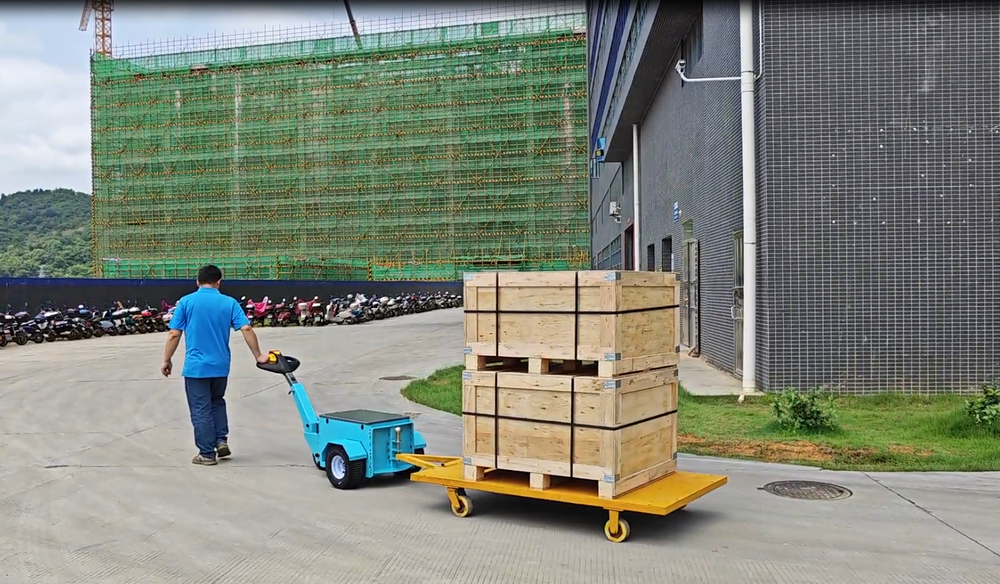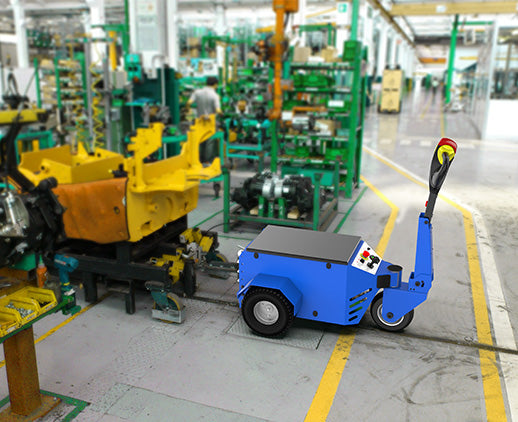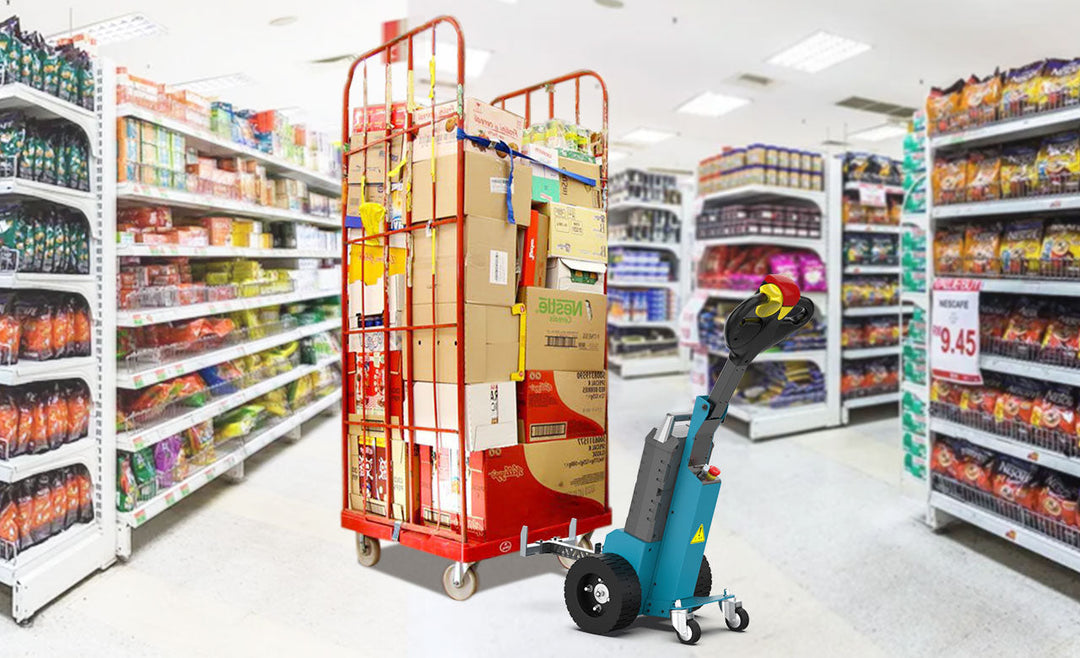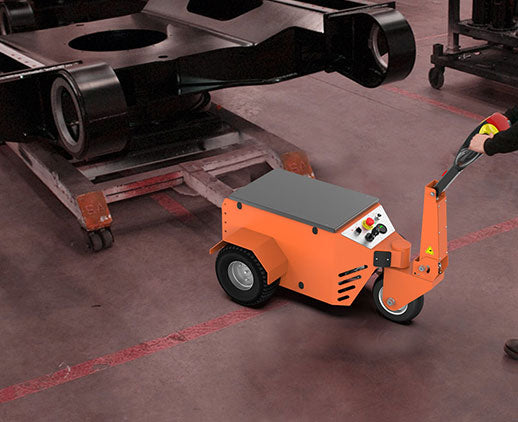How Do Brushless Motors Enhance the Performance of electric Tugs
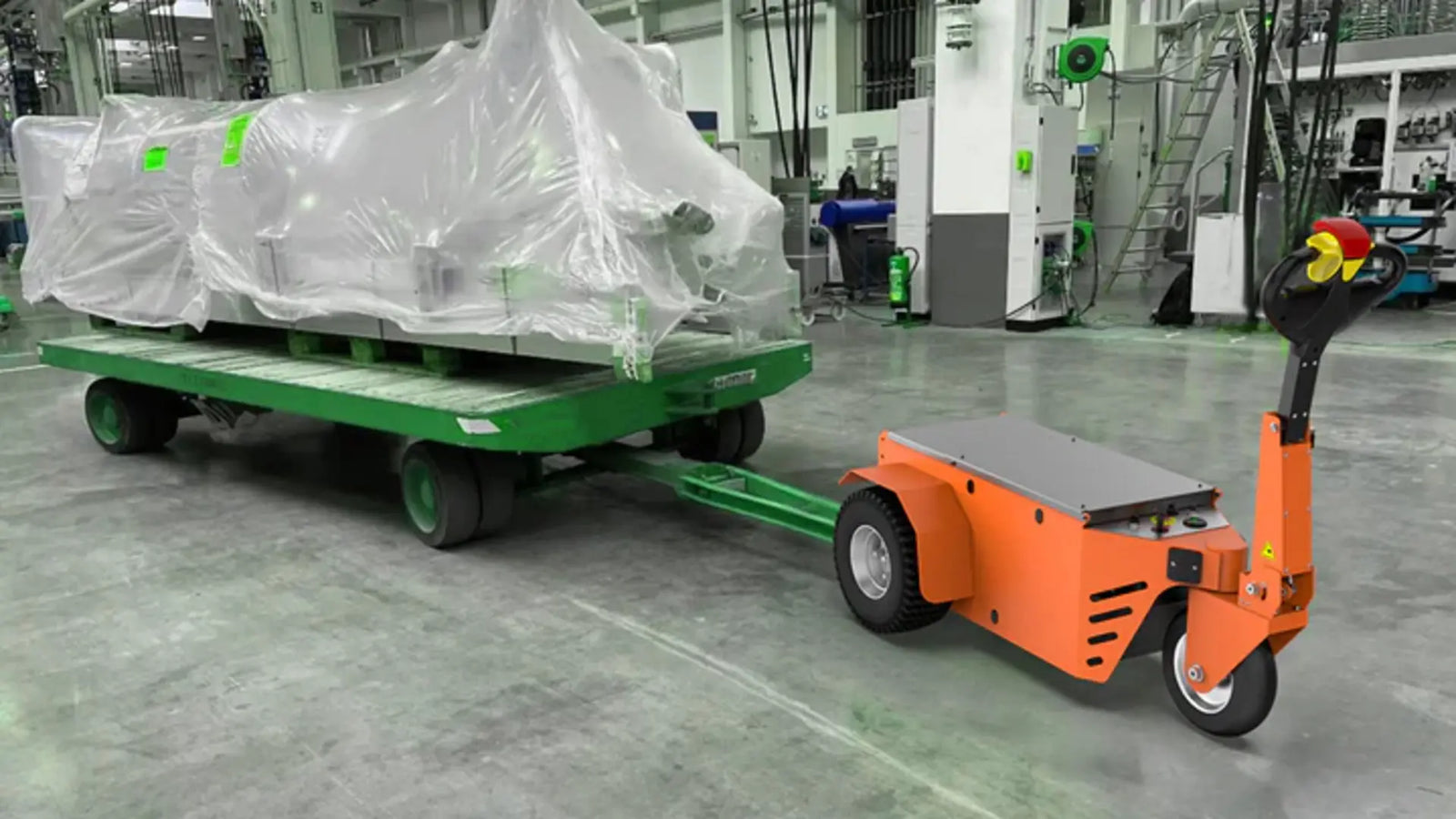
With more than 90% effective energy conversion, brushless motors extend tugs operating time and cut down energy consumption by about 20%. High torque characteristic outputs stronger power with lower speed, while the maintenance-free design contributes to reducing about 30% downtime for the equipment.
Improving Efficiency
Compared to traditional brushed motors or diesel engines, brushless motors feature an extremely high efficiency in energy conversion. Because of the mechanical friction losses, the highest possible efficiency a traditional brushed motor can have is about 70% to 75%, while in brushless motors, it may be over 90%. The higher the energy conversion efficiency, the longer the work time and the stronger power output can be achieved with the same amount of power.
For a heavy-object-moving tool, operating time is a very relevant measure of productivity. A brushless motor can easily extend the operating time by several times compared to each charge. If a traditional brushed-motor device can work 8 hours per charge, the conversion to a brushless motor would translate into an increase in operational time to 10 hours or more. This greatly improves productivity in use cases such as warehouses or factories that demand operation with no stoppage, reduces the frequency of mid-operation recharges and cuts down significantly on time spent sitting idle along with its operational costs.
This means that it reduces operating costs directly with reduced energy consumption. Traditional tugs consume a lot during the long and intensive operations in logistics centers. When equipped with brushless motors, about 15% to 20% of energy consumption can be reduced. Assuming that a logistic center consumes 1 million kilowatt-hours per year, switching to a brushless motor could save 100,000 to 200,000 kilowatt-hours of electricity, translating into huge cost savings for large logistic centers.
Higher Torque and Power Density
Brushless motors, when compared to conventional motors, are characterized by higher power density and higher torque output. It follows that they turn out to be particularly effective in tug equipment. Quite often, tug equipment operates at low speeds with high loading, typically while pushing or pulling heavy goods or equipment. In such scenarios, the high-torque characteristics ensure that at low speeds, the equipment is capable of providing strong power.
The brushless motor has a very smooth torque output without sudden surges compared to the brushed motors. In factory operations on the assembly line, tugs have to move large quantities of heavy tools and materials, which the brushless motor handles without jumps for such scenarios where goods could get damaged or equipment fails due to a lot or too little power. The higher power output of brushless motors can be accommodated in a smaller footprint and, thus, smaller equipment design with increased flexibility and mobility. This will be useful in applications where the use of these machines needs to operate within confined spaces.
Its high power density means stronger power in a smaller size, thus allowing the device to be lighter and more compact, which is a great advantage in a situation that requires flexible movement and operation.
Enhanced Reliability and Reduced Maintenance
One of the big advantages of brushless motors is that their internal structure does not require brushes, therefore minimizing problems related to brush wear. Conventional brushed motors have to be maintained more frequently or have their brushes replaced since, after some time, wear in brushes and commutators increases downtime and raises maintenance costs.
The maintenance-free characteristics of brushless motors mean big improvements in equipment reliability. In fact, equipment failure and downtime can cripple production lines, as many industrial settings rely on day-by-day operations through logistics parks, warehouses, and manufacturing facilities. Therefore, these components have to be highly reliable. In general, brushless motors can last two to three times more than brushed motors, while in some applications, they may go several decades before replacement is necessary. This, in turn, reduces production delays due to repairs or replacement, further smoothing operational efficiency for long-term and frequent use of the tug equipment.
The design of a brushless motor devoid of parts that often need replacement also equates to simpler and less expensive maintenance, which is important for a business in terms of long-term cost control. Beyond just saving on labor and materials for repair, reducing daily maintenance time increases the overall number of operational hours put in and heightens productivity.
Improved Control and Responsiveness
Compared to the conventional motor, the brushless type of DC motor provides quicker response times and much better control capability. Conventional tug winches rely on mechanical control for speed and directional change, which tends to be slower and less precise. A brushless motor, through an electronic control system, can provide fine adjustments in motor output with response times almost down to millisecond levels.
Such quick response provides substantial benefits for practical applications. If the tug is to move goods around a tight warehouse space or even crowded factory floors, equipment flexibility and precision control are required. Here, the brushless motor control system can implement on-site adjustment of the motor output power input by an operator in real-time and make sure that operations can be smoothly performed without any collisions. Simultaneously, there is an added ability of wireless remote control of devices by an operator; due to this convenience, work efficiency and safety of operation are further improved.
On modern systems of controlling brushless motors, several modes of operation can be configured in accordance with different requirements of a task. The modes include high-power mode, for example, and energy-saving mode. For operations that are long and with light loads, the energy-saving mode can achieve maximum battery efficiency for prolonging operating time, while during high-load tasks, the high-power mode ensures powerful power output. Such a flexible mode-switching ability enables the tug equipment to be applied to various operating environments, guaranteeing stability during diverse load conditions.
Reduced Noise and Vibration
Another striking feature of brushless motors compared with their brushed motors is that they generate comparatively less noise and vibration. This is due to the simple reason that the former does not have friction between brushes and commutators, hence making operation smooth and quiet. This is particularly important in the case of indoor-operated tug equipment.
Quieter working conditions enable the operators to get less distracted and thus avoid mistakes. In the case of long and intensive operations, less noise reduces operator fatigue and increases efficiency.
The lesser vibration also infers less mechanical stress during operation, increasing the equipment's lifetime. High-vibration equipment may easily develop wear and fatigue in its structural components, which may be harmful to the life of such equipment. Stable running of brushless motors avoids these problems, hence decreasing maintenance needs and increasing useful life.
In noise- and vibration-sensitive environments, such as hospitals, laboratories, and libraries, low-noise tug equipment minimizes disruption to a minimum, protecting a quiet and stable working environment.




